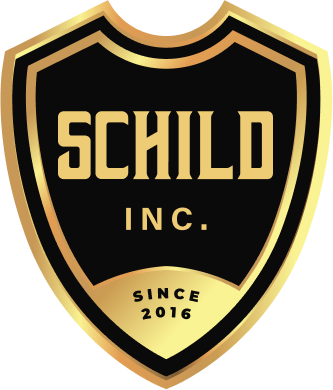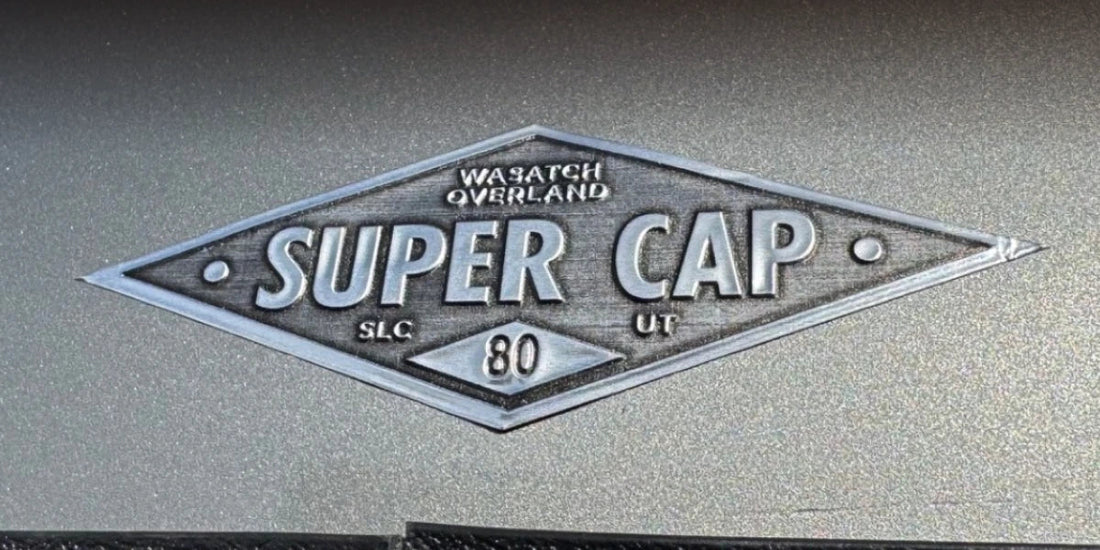Perché le targhette in metallo incise sono lo standard del settore
Quando la durata incontra il dettaglio, le targhette in metallo incise sono la soluzione perfetta. A differenza degli adesivi o delle etichette stampate, le targhette incise utilizzano processi chimici o laser per tagliare i disegni sulla superficie del metallo. Questo crea un segno permanente e ad alto contrasto che resiste a intemperie, calore, sostanze chimiche e abrasioni.
Le targhette incise sono ampiamente utilizzate per:
- Branding → loghi su mobili, biciclette o beni di qualità.
- Conformità → numeri di serie, codici modello, marcature di sicurezza.
- Fascino di lusso → vino, liquori e cosmetici che necessitano di un aspetto prestigioso.
Se hai bisogno di un'etichetta che rimanga nitida per decenni, le etichette in metallo inciso sono la scelta ideale.
Vedi più esempi di etichette in metallo →
Passo 1: Definisci la Tua Applicazione

Il primo passo è capire dove verrà utilizzata la targhetta:
- Industriale: Macchinari, attrezzature e strumenti che richiedono targhette di conformità.
- Consumatore: Biciclette, mobili ed elettronica che richiedono un forte branding.
- Beni di lusso: Vino, profumi e cosmetici che necessitano di durata + prestigio.
👉 Consiglio: Per ambienti esterni o industriali, scegli l'acciaio inossidabile. Per un branding artigianale, targhette incise in ottone o rame creano un aspetto caldo e di qualità.
Passo 2: Scegli il Metallo Giusto
L'incisione funziona meglio su certi metalli. Ognuno ha punti di forza unici:

| Metallo | Perché Funziona per l'Incisione | Casi d'Uso Tipici |
|---|---|---|
| Alluminio | Leggero, incide in modo pulito, resiste alla corrosione | Biciclette, branding per i consumatori, elettronica |
| Acciaio Inossidabile | Ultra-durevole, resistente a sostanze chimiche e calore | Strumenti, macchinari, targhe di conformità |
| Ottone | Incide profondamente, sviluppa una patina elegante | Mobili, artigianale, branding di lusso |
| Rame | Aspetto unico invecchiato, dettaglio di incisione più morbido | Artigianato, branding decorativo |
👉 Suggerimento: Se la leggibilità sotto stress è fondamentale (ad esempio, etichette di sicurezza), le targhe incise in acciaio inossidabile sono la scelta più sicura.
Passo 3: Comprendere il Processo di Incisione

Incisione chimica è il metodo più comune:
- Una resistenza protettiva è applicata alla superficie del metallo.
- Il design è esposto, lasciando solo le aree desiderate non protette.
- Acido o sostanze chimiche incidono le aree non protette, tagliando nel metallo.
- Opzionale: Le aree incise sono riempite con vernice smaltata per contrasto.
Incisione laser è un'altra opzione, utilizzando un raggio focalizzato per vaporizzare la superficie. È precisa ma migliore per tagli più sottili e produzioni più piccole.
👉 Suggerimento: Per la produzione ad alto volume, l'incisione chimica è più conveniente. Per prototipi o dettagli intricati, l'incisione laser potrebbe essere ideale.
Passo 4: Dimensione, Forma & Raggi
1. Dimensioni standard:
- Piccole (10–20 mm) → loghi, elettronica.
- Medie (20–50 mm) → biciclette, mobili, branding per consumatori.
- Grandi (50+ mm) → macchinari e targhe dati.
2. Opzioni di forma:
- Rettangolari per conformità e branding generale.
- Circolari o ovali per beni di lusso e branding artigianale.
- Forme personalizzate per loghi e design creativi.
Raggi: Angoli arrotondati (raggio minimo 1–2 mm) prevengono bordi taglienti e garantiscono una migliore adesione.
Step 5: Font & Impostazione Grafica
Poiché l'incisione rimuove materiale, la scelta del font influisce direttamente sulla leggibilità.
- Font sans-serif (Arial, Helvetica) → puliti, leggibili anche a dimensioni ridotte.
- Font serif → eleganti, ma migliori per targhe incise di medie o grandi dimensioni.
- Spessore del tratto: Evita linee ultra-sottili (<0,2 mm) che potrebbero scomparire durante l'incisione.
Impostazione del file grafico:
- Formati vettoriali (AI, EPS, SVG) preferiti.
- Testo convertito in contorni.
- Larghezza minima della linea: 0,2–0,3 mm per l'incisione chimica.
- Aggiungi bordo/sbavatura se il design si estende fino al bordo.
👉 Suggerimento: Richiedi sempre una prova di pre-produzione prima della produzione di massa.
Step 6: Finiture & Colore di Riempimento
L'incisione crea un segno incassato. Puoi lasciarlo grezzo o riempirlo per contrasto:
- Incisione grezza: Sottile, pulita e industriale.
- Incisione riempita di vernice: Alto contrasto, con smalto abbinato Pantone o CMYK.
- Sfondo spazzolato + riempimento inciso: Aspetto elegante e di alta qualità.
- Alluminio anodizzato + incisione: Colorato ma resistente.
👉 Suggerimento: Per la leggibilità all'aperto, scegliere riempimenti di vernice ad alto contrasto come nero su argento.
Passo 7: Opzioni di Montaggio
Come si attacca la tua placca incisa è importante:
- Adesivo industriale (nastro 3M): Aspetto pulito, ideale per superfici lisce.
- Rivetti o viti: Fissaggio robusto per macchinari e attrezzi.
- Montaggio magnetico: Etichette temporanee o branding intercambiabile.
👉 Suggerimento: Se si applica su superfici curve (come bottiglie o tubi di biciclette), utilizzare alluminio inciso sottile con adesivo flessibile.
Passo 8: Test & Controlli di Qualità
Le placche incise dovrebbero essere sottoposte a test prima dell'approvazione:
- Test di nebbia salina → simula la corrosione nel tempo.
- Test di abrasione → verifica la resistenza ai graffi.
- Test di esposizione ai raggi UV → garantisce che il riempimento di colore non sbiadisca.
- Test di adesione → verifica la resistenza del legame alle superfici.
Leggi Anche:
-
Placche con Logo in Metallo: Usi per Biciclette & Mobili | Schild Inc
- Perché le etichette in acciaio inossidabile sono la scelta migliore per l'uso industriale
- La guida completa alle etichette in metallo resistenti al calore per candele
FAQ sulle targhette in metallo inciso
Q1. Come incidere un nome su metallo?
I nomi sono incisi applicando una resistenza al metallo, quindi esponendo il design all'acido o a un laser. Il chimico o il raggio rimuove le aree non protette, lasciando un'impressione permanente.
Q2. Cos'è una targhetta incisa chimicamente?
È una piastra dove il testo o la grafica sono incisi sulla superficie usando l'incisione chimica. Questo metodo crea dettagli fini con risultati durevoli, spesso con riempimento in smalto per leggibilità.
Q3. Cos'è l'incisione su metallo?
L'incisione è un processo sottrattivo che rimuove gli strati superficiali per creare loghi, testi o disegni. È ampiamente utilizzato per marchi durevoli e targhette di conformità industriale.
Q4. Quale metallo è il migliore per una targhetta?
- Acciaio inossidabile → massima durata per l'industria.
- Alluminio → leggero, resistente alla corrosione, economico.
- Ottone → fascino classico, artigianale.
- Rame → decorativo, aspetto di lusso con patina.
Considerazioni finali
Le targhette in metallo inciso sono il perfetto equilibrio tra precisione e durata. Seguendo i giusti passaggi nella scelta dei materiali, preparazione dell'opera d'arte, selezione delle finiture e test, garantirai che le tue targhette non solo appaiano impeccabili ma durino anche per decenni.
Alla Schild Inc., siamo specializzati in targhette incise personalizzate per industrie che vanno dalle biciclette e mobili agli utensili, macchinari e marchi di lusso.
👉 Pronto a creare il tuo? Richiedi oggi un pacchetto campione personalizzato e scopri come le etichette in metallo inciso possono trasformare la presenza del tuo marchio.

